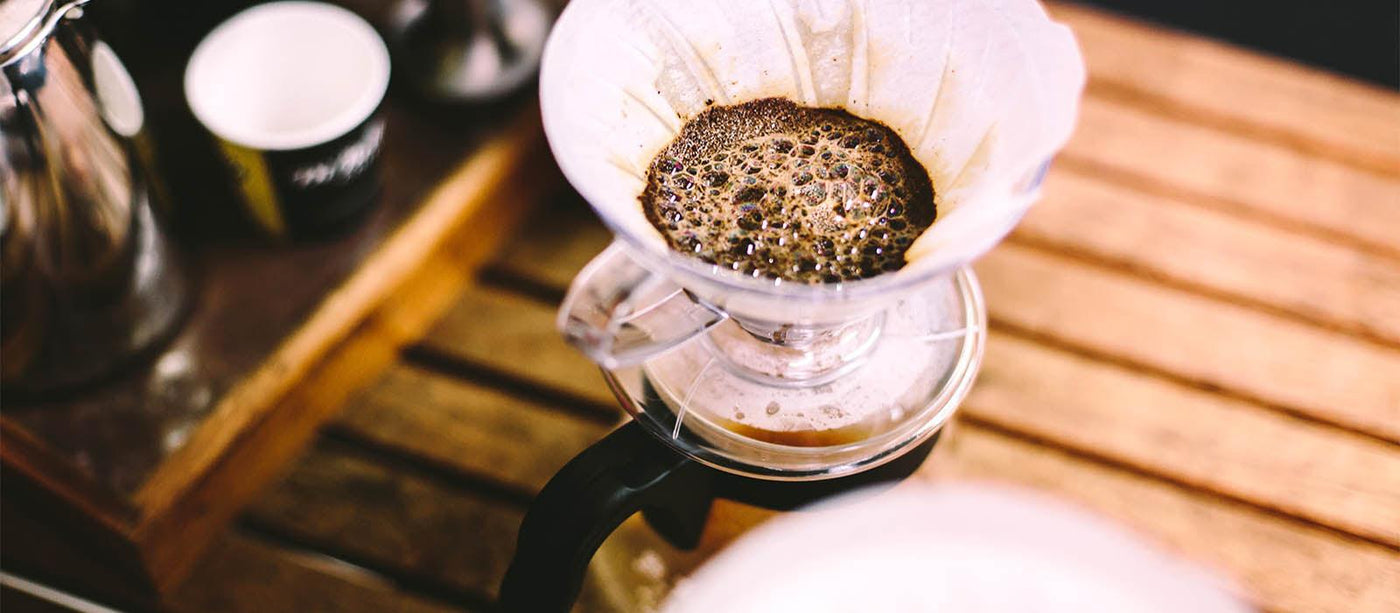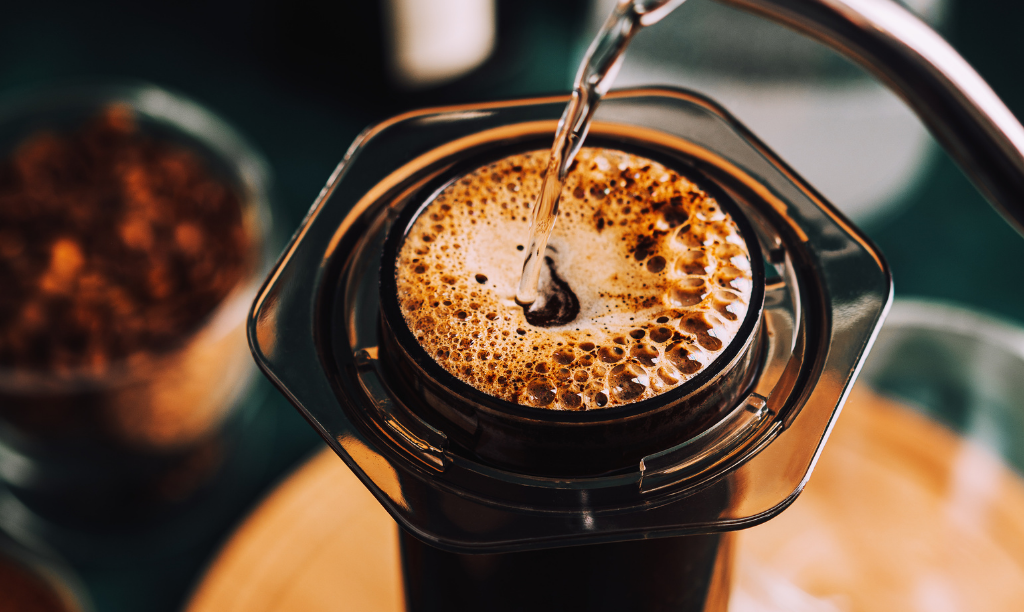Coffee Brewing Methods Demystified: From French Press to Cold Brew
Coffee Brewing Methods Demystified: From French Press to Cold Brew
Blog Article
The Science Behind Coffee Developing: Just How Temperature Level and Time Affect Your Beverage
Comprehending the scientific research behind coffee developing discloses that temperature level and time are not plain variables yet essential aspects that dictate the drink's taste account and general high quality. The optimum brewing temperature level normally falls between 195 ° F and 205 ° F, while the duration of extraction differs considerably throughout various methods. This interaction of elements can result in a mug that is either wonderful or unsatisfactory. As we check out the subtleties of these components, the question occurs: exactly how can one effectively equilibrium temperature level and time to accomplish that perfect brew?
The Chemistry of Coffee Extraction
The chemistry of coffee extraction dives into the intricate processes that transform raw coffee beans into the fragrant drink enjoyed worldwide. This improvement mainly involves the solubility of different substances present in the beans, which are influenced by aspects such as grind dimension, water top quality, and the brewing approach used.
Throughout the developing process, hot water serves as a solvent, removing soluble substances, consisting of high levels of caffeine, lipids, acids, and sugars, from the coffee premises. Each substance adds to the taste profile, aroma, and body of the final drink. Acids are liable for intense and appetizing notes, while oils contribute to a rich mouthfeel.
The first phases of brewing remove acids and sugars, leading to a positive level of acidity, while extended removal can lead to bitterness due to over-extraction of undesirable substances. Comprehending these chemical communications is crucial for enhancing brewing strategies, as the equilibrium between removal time and water temperature level can considerably affect the overall quality of the coffee.
Perfect Brewing Temperatures
Locating the ideal developing temperature is important for unlocking the complete potential of coffee tastes and aromas - coffee brewing methods. Research shows that the ideal variety for developing coffee lies between 195 ° F to 205 ° F(90 ° C to 96 ° C) Within this array, the removal procedure properly liquifies the desirable soluble compounds in coffee beans, bring about a savory and well balanced mug
Brewing at reduced temperatures, such as below 195 ° F(90 ° C ), may result in under-extraction, generating a weak and acidic brew with low-key tastes. On the other hand, developing at temperatures going beyond 205 ° F(96 ° C) can result in over-extraction, generating a bitter and rough preference because of the extreme dissolution of undesirable compounds, such as tannins.
In addition, the optimal developing temperature level can vary depending on the coffee bean type and roast degree. Lighter roasts typically profit from somewhat higher temperatures to improve their complex flavor profiles, while darker roasts may be much better fit to reduced temperature levels to mitigate resentment.
Eventually, keeping accuracy in developing temperature levels is essential for accomplishing a harmonious balance of flavors, making sure that every mug of coffee provides a rewarding sensory experience.
Effect of Brewing Time
Brewing time plays a critical duty in determining the taste account and overall top quality of coffee. Shorter brewing times can result in under-extraction, leading to a sour or weak flavor, as not enough soluble substances are dissolved.
Ideal brewing time differs relying on the method made use of and the work dimension of the coffee. A French press typically requires concerning four mins, while espresso removal is generally finished within 25 to 30 secs. It is vital to adjust developing time in combination with various other variables, such as water temperature level and coffee-to-water proportion, to accomplish the desired flavor profile.
Understanding the effect of brewing time makes it possible for coffee lovers to improve their brewing methods, inevitably enhancing the sensory experience of their mug (coffee brewing methods). With careful interest to this variable, one can unlock the complete potential of the coffee, disclosing its unique attributes and subtleties
Developing Approaches and Their Results

For circumstances, methods like French press and cold brew permit a longer steeping time, leading to a fuller body and robust taste due to boosted extraction of oils and soluble solids. Alternatively, espresso developing makes use of high pressure and a much shorter removal time, generating a focused shot that stresses extreme tastes and an abundant crema.
Pour-over strategies, such as Chemex or V60, supply a more controlled extraction procedure, permitting the maker to manipulate flow rate and water distribution, which can enhance illumination and clearness. Meanwhile, percolation methods cycle water why not find out more via the coffee a knockout post premises numerous times, bring about a more powerful, typically bitter flavor.
Lastly, making use of paper filters versus metal filters can additionally influence the final preference; paper filters usually produce a cleaner mug by trapping oils and great bits, while metal filters enable more oils to pass through, adding to a fuller mouthfeel - coffee brewing methods. Comprehending these nuances can elevate the coffee experience substantially
Tips for Improving Your Mixture
A well-executed mixture can transform also the simplest coffee right into an amazing experience. Grind the beans simply before making to optimize freshness, making sure the work size matches your developing technique-- coarser for French press and finer for coffee.
Water top quality plays a critical function; usage filtered water devoid of contaminations. The optimal brewing temperature level ranges between 195 ° F and 205 ° F(90 ° C to 96 ° C ) Too hot can swelter the coffee, while also amazing may under-extract tastes.
Timing is similarly important. For immersion techniques, soaking for three to five mins is optimal, whereas drip methods usually take about 5 mins. Trying out mixture times to locate your recommended toughness.

Final Thought
In recap, the intricate relationship between temperature level and time is paramount in the coffee brewing process. Recognizing these scientific concepts equips people to improve their brewing methods, inevitably leading to a much more satisfying and balanced coffee experience.
Comprehending the scientific research behind coffee developing exposes that temperature level and time are not simple variables yet critical components that determine the beverage's flavor profile and overall top quality. Comprehending these chemical interactions is crucial for enhancing developing strategies, as the equilibrium between extraction time and water temperature level can dramatically affect the overall top quality of the coffee.Brewing time plays a pivotal duty in figuring out the taste account and overall quality of coffee. By concentrating on these components-- bean high quality, grind size, water temperature, steeping time, and proportion-- you can raise your coffee developing procedure, resulting in a regularly superior cup.
In recap, the complex partnership between temperature and time is vital in the coffee developing process.
Report this page